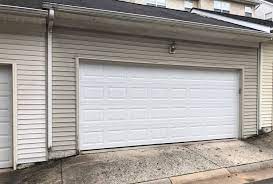In the vast tapestry of modern home maintenance, one issue often gets overlooked until it becomes a significant problem: garage door repair.
This integral part of daily life, responsible for safeguarding vehicles and serving as an additional entry point to the home, is frequently underappreciated in its complexity and importance.
Like all mechanical systems, garage doors require regular attention to ensure optimal performance over time.
Properly maintaining these systems can prevent costly repairs or replacements down the line and significantly improve overall home functionality.
This article delves into the world of garage door repair with a comprehensive guide on identifying common issues and exploring steps for do-it-yourself fixes.
It dissects every facet of this important topic from a knowledgeable perspective, providing clear instructions and detailed explanations that empower homeowners to confidently manage their garage door health.
Whether you’re a seasoned DIY enthusiast or someone just starting their home improvement journey, this piece offers valuable insights that promote understanding and inspire action towards better care for your garage’s most crucial component – its door.
Identifying Common Issues
Common issues with garage doors, ranging from minor inconveniences to significant operational problems, can often be identified through careful observation and systematic troubleshooting. The complexity of these mechanisms necessitates a comprehensive understanding of their components and functioning.
Some common problems may include the door not closing or opening fully, unusual noises during operation, remote control malfunctions, or even irregular movement of the door. It is worthwhile noting that each issue could stem from various causes – for instance, a door that does not open fully might be due to an obstruction in the track or an issue with the limit switch.
The task of identifying these issues requires both patience and attention to detail. For instance, listening carefully to the sounds made by the garage door can provide valuable clues about its condition. A grinding noise might indicate ungreased tracks or worn-out bearings while squeaking could suggest tension problems in the springs.
Similarly, observing the motion of the garage door as it opens or closes can reveal potential issues with alignment or balance; uneven movement usually denotes trouble with rollers or tracks. Also crucial is keeping an eye on response times; any noticeable delay between command input (via a wall switch or remote controller) and action could imply electrical problems.
Understanding these common issues serves as a starting point for troubleshooting efforts aimed at restoring optimal performance to any garage door system. While certain concerns such as battery replacement in remote controllers might require minimal technical knowledge, others like repairing broken springs are best left to professionals due to safety risks involved.
Regardless of whether one chooses DIY methods or professional assistance for repairs, this process begins with accurate problem identification – a testament to its importance in maintaining functional residential spaces and ensuring user convenience within them.
Steps for DIY Fixes
Embarking on a do-it-yourself approach to maintaining the functionality of your carport entrance can often result in significant preservation of its effectiveness. Primary among these self-service tasks are routine inspections, which should be conducted at least twice annually.
During these examinations, individuals should look for signs of wear or damage such as rusted or loose components, frayed cables, misaligned tracks, and broken springs. If any of these issues are identified, it is essential that they be addressed promptly to prevent further deterioration and possible malfunction.
The next step requires the acquisition of appropriate tools and materials needed for repairs. These might include replacement parts such as springs or cables, lubricants for moving parts like rollers and hinges, and cleaning supplies to remove dirt and debris that could hinder operation.
With these in hand, individuals can begin the repair process by first disconnecting the opener from power supply for safety reasons before starting any work. Following this precautionary measure would involve repairing or replacing damaged components as necessary.
Addressing minor issues as part of regular maintenance efforts will not only ensure optimal performance but also extend the lifespan of your garage door system significantly. It’s vital to remember that while some minor repairs can be managed independently with proper precautions; complex problems – particularly those involving torsion springs – warrant professional attention due to potential hazards associated with their high tension levels.
Therefore, striking a balance between DIY fixes when suitable and engaging professionals when necessary ensures smooth functioning while contributing towards creating an environment where one feels secure about their surroundings’ reliability.
https://perfectsolutionsgaragedoor.com/urgent-garage-door-repair-rapid-solutions-for-your-critical-needs/
https://perfectsolutionsgaragedoor.com/frequent-issues-with-garage-doors-and-their-repair-solutions/


